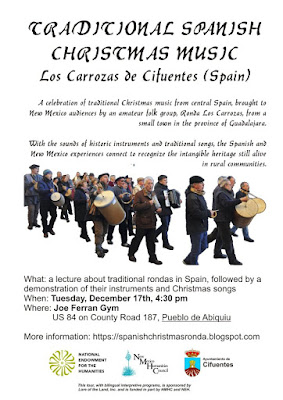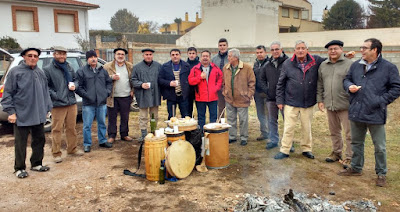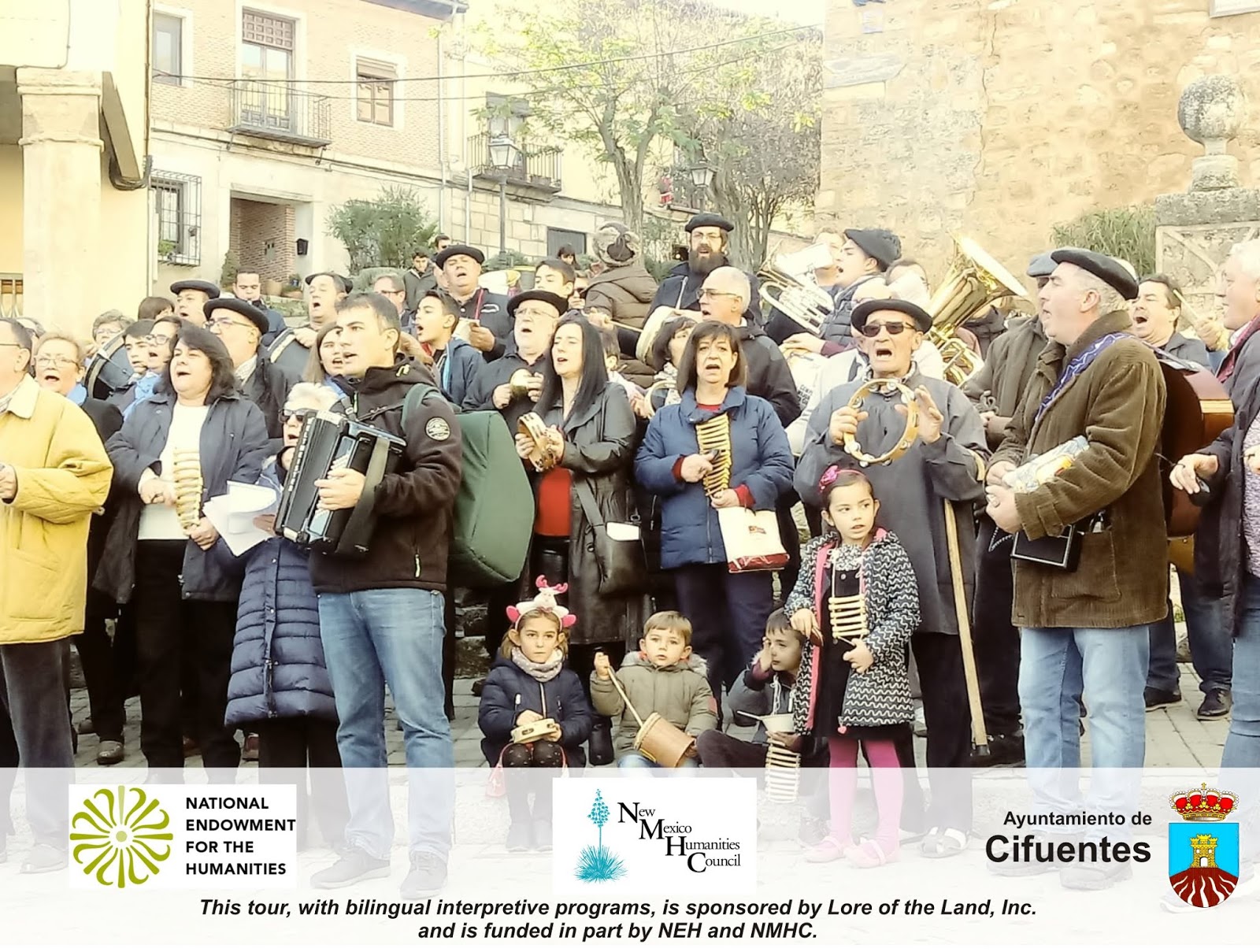Afraid of being late, because the vans had no GPS and we might get lost on the way, we arrived too early at Abiquiu, so we dedicated some time to visit the pueblo, walked along the streets, and visited an antiquities store.
 |
| At the main square of Abiquiu, with the church of Saint Thomas in the background. |
 |
| Much to our surprise, a Spanish thresh was offered for 1,800 US$ amongst the antiquities. |
Isabel
Trujillo, director of the Pueblo de Abiquiu Library and Cultural Center and very active woman with her local community, had organized the logistics of the event, including a dinner with delicious local gastronomy.
 |
| We repeated the morning program: the talk of Enrique... |
 |
| ...and the Christmas carols, duly explained by Edmundo and translated by Natalia. |
 |
| The most impacting instrument for the public in all performances was the zambomba. |
 |
| Traditional clothing also caused a sensation. |
The subsequent visit to Saint Thomas Apostle church of Abiquiu was an experience to remember. Dexter (Isabel Trujillo's husband) explained to us very interesting details about the church, speaking to us in a peculiar old Castilian, with Mexican and Sephardic influence.
This was going to be our last night at Santa Fe, so once back to the city, we decided to visit the central part with its old plaza and church.
 |
| The church and the central square of Santa Fe were nicely adorned with lighting. |
 |
| In the old inn (La Fonda), close to the main square, there are very beautiful corners. |
 |
| One of the rooms had balconies to peek out to gossip. |
After a long drive through the entire old town, with Hilario explaining neighborhoods, streets, buildings and corners, we had to say goodbye to this beautiful city and its people, who had welcomed us so well!
 |
| Hilario explains to us how adobe walls should be taken care of. |


















Comments
Post a Comment